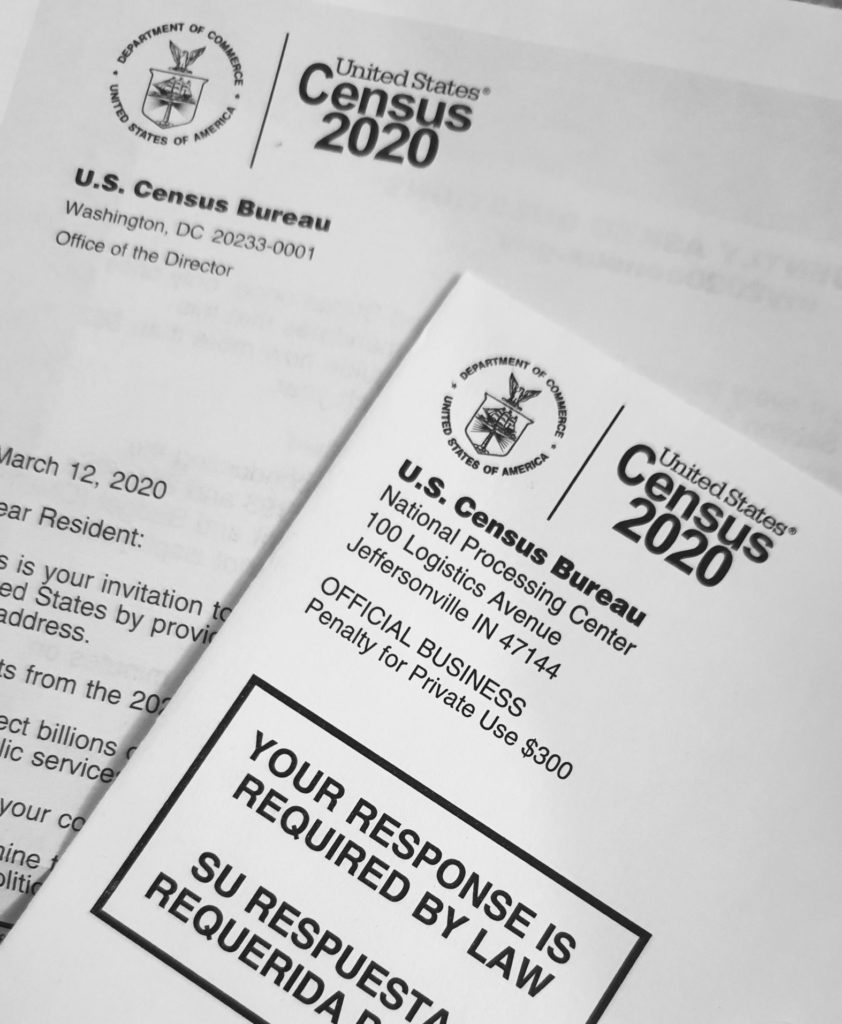Over the last several months, you’ve likely heard a lot of talk about the US Census—both calls to complete it and concerns about its timeline. Census results have broad implications for political representation, federal funding to states and communities, and how we see ourselves as a country. But far too few advocates for students with disabilities are aware of the role the Census plays in funding special education or the risks an incomplete count pose to students.
 The U.S. Census, first administered in 1790 and every decade thereafter, aims to count the entire population of the country and collect demographic data. This count provides the basis for the determination of Congressional representation and the allocation of $800 billion in federal funds supporting vital programs and services—from healthcare to highway maintenance—that impact everyday American life.
The U.S. Census, first administered in 1790 and every decade thereafter, aims to count the entire population of the country and collect demographic data. This count provides the basis for the determination of Congressional representation and the allocation of $800 billion in federal funds supporting vital programs and services—from healthcare to highway maintenance—that impact everyday American life.
The Risks of an Incomplete Census
On August 3, the U.S. Census Bureau announced its intention to end field data collection by September 30, 2020, a month earlier than planned. While a judge issued a temporary restraining order blocking this action on September 6, the outcome remains uncertain. Policymakers, including former directors of the Census Bureau, have warned that this shortened timeline could lead to both data inaccuracies and an undercounting of people in marginalized communities, an outcome that would further reduce access to education, housing, and other services.
To date, too few people have responded to the Census—as of September 7, the self-response rate stood at just 65.5%. Analysis of the 2010 Census reveals key areas of concern that can only be avoided in 2020 if all residents of the United States have the opportunity and the time needed to respond. For example, in 2010 ethnic minorities were omitted from results at higher rates than non-Hispanic whites, children aged 0–4 were seriously undercounted, and people with disabilities were classified as a “hard-to-count” population. Communities that are undercounted seldom receive their fair share of federal funding for critical services or political representation—problems that will only be exacerbated by a shortened timeline. Children from marginalized communities, especially those with disabilities, are particularly at risk of negative consequences due to the essential role the Census plays in education funding in general and special education funding in particular.
The Census and Special Education Funding
At the federal level, Census data is used to distribute funds through large programs such as IDEA and Title I. At the state level, most, if not all, states rely on Census data to determine student population and poverty levels, and those data drive decisions for allocating state dollar amounts through different formulas. Each state has its own legal mechanism for funding special education in public schools with state dollars. Most states provide their school districts with a base amount of funding per student and then give an additional amount to meet the needs of certain student populations, such as students living in poverty and students with disabilities.
To highlight the variation on how the Census data are used by states to calculate education funding, we provide three examples: a multiple weight system, a single weight system, and a Census-based system.
- Multiple Weight System: Some states, such as Colorado and Georgia, use a multiple weight system that provides school districts with a base amount of per-student dollars as well as a supplemental amount for students with disabilities that is determined by either the severity of their disability, their educational setting (e.g., homebound, vocational adjustment class), the number of service hours prescribed in their Individual Education Program (IEP), or some other factor.
- Single Weight System: Other states, such as Maryland and Louisiana, use a single weight system that provides districts with a base per-student amount along with a fixed amount for all students with disabilities, regardless of differences in severity, setting, or hours of special education services prescribed.
- Census Based System: New Jersey and Idaho use a Census-based system in which the state assumes that each of their districts has the same percentage of students requiring special education regardless of the actual number of students that may need these services, and then provides additional dollars based on that predetermined assumption on top of the base per-student amount.
A Census undercount of children would lead to a reduced level of funding using any of these formulas. Getting an accurate count of individuals in states and their local communities is imperative to ensuring that schools receive the funding they need and students with disabilities can access the free, appropriate, and quality public education to which they are entitled.
Take Action
Advocates are pressuring the U.S. Census Bureau to push back the data collection deadline. Because states need access to every available federal dollar for education, we support these coalitions in fighting to restore the initial timeline to help avoid a massive undercount of marginalized communities. Whether the courts push back the timeline to end the Census or not, those of us who care about education funding must make sure every individual has completed it.
Spread the word to neighbors, friends, relatives, and those at your school. The educational success of your child, your neighbor’s children, your best friend’s children, your sibling, and hundreds of thousands of children that rely on publicly-funded education now and over the next ten years may depend on it. Fill out the Census today.
Comments are closed.